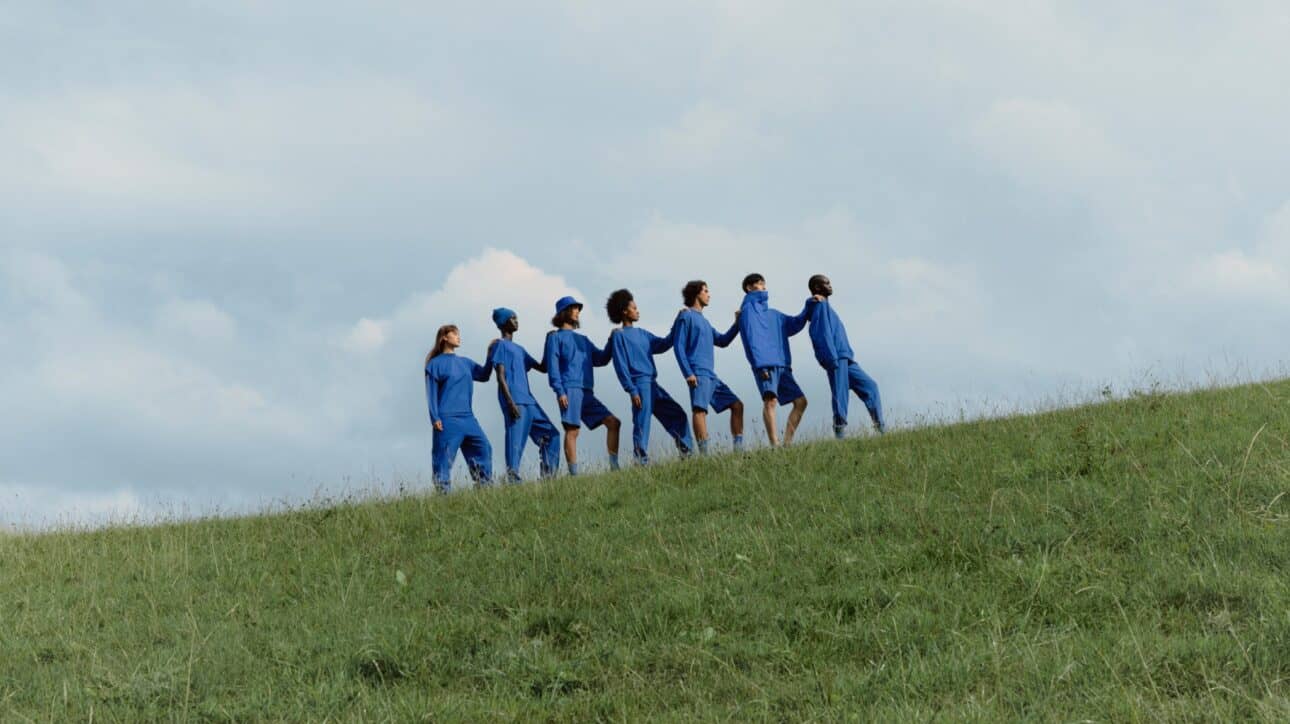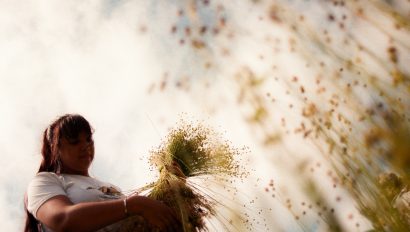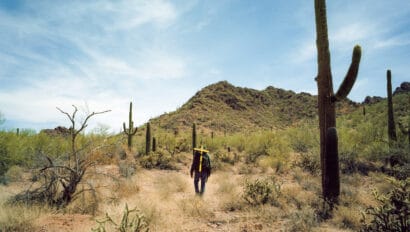Scaling Materials Science in Fashion Supply Chains with PANGAIA

Photo: PANGAIA
The Best Practice series sees Textile Exchange tap industry insiders to share their expertise on specialist subjects, highlighting the actions taken from the perspective of those at the forefront of these conversations.
For this edition, we speak to PANGAIA about building a brand with regenerative and innovative materials at its foundation, and what scaling these fibers sustainably looks like on the ground.
Founded in 2018, PANGAIA is both a fashion label and a materials science company. As a collective of scientists, designers, technologists, and creatives, its hybrid business model is founded on interdisciplinary collaboration, paving the way for what it calls an Earth Positive future.
The company’s approach is holistic and multifaceted, looking at ways of improving materials and systems of production at multiple levels. This ranges from investing in lower-impact, regenerative, and circular methods to creating a suite of revolutionary, patented fibers and materials. In doing so, its goal is to become net-zero by 2040 across Scopes 1-3.
Speaking with Textile Exchange, the PANGAIA Collective explained that it is “focused on investing in the future and finding problem-solving material innovations.” As such, it tackles the negative impacts of production at the raw material source, seeking to transform the industry from the start of the supply chain.
“PANGAIA is focused on investing in the future and finding problem-solving material innovations.”
When it comes to sourcing familiar materials such as cotton, PANGAIA is working to evolve existing systems and drive forward production models that not only reduce negative environmental and social impacts, but also give back more than they take from nature.
While its goal is for all virgin cotton to be grown using regenerative farming by 2026, the company’s In Conversion Cotton Capsule range represents the beginning of this journey, supporting farmers as they shift to practices that restore soil health and biodiversity. The emphasis on “in conversion” shows that this is an ongoing process, and switching to regenerative agriculture needn’t mean disrupting production or changing suppliers.
Along with this transparency also comes the recognition that terms like “regenerative” need clear definitions – without which, “buzzwords can become misleading and actually set back efforts,” according to PANGAIA. Seeing as best practices and desired outcomes vary greatly depending on the context, the company notes that “the very concept of regenerative systems means that a holistic approach must be taken, grounded in the needs and knowledge of direct practitioners such as farmers and growers, rather than prescribing a single set of requirements or practices.”
“The very concept of regenerative systems means that a holistic approach must be taken, grounded in the needs and knowledge of direct practitioners such as farmers and growers.”
Aside from committing to more responsible sourcing practices, PANGAIA takes a disruptive approach by developing pioneering alternative materials. Its team of scientists and partner laboratories has created an extensive range of bio-based solutions, with eight new materials launched in 2021. These include FLWRDWN™, an alternative to feathers and synthetic down made from wildflowers, FRUTFIBER™, designed to replace cotton by combining bamboo lyocell with pineapple and banana leaf – both by-products of the food industry – and PLNTFIBER, which uses plants such as Himalayan nettle, bamboo, eucalyptus, and seaweed.
It’s clear that biomimicry is key to the company’s creative strategy. Its designs are driven by what the company calls “high-tech naturalism”, which looks to harness systems already existing in nature (for example, carbon, agricultural waste, or microorganisms) to create something entirely new.
This fusion of nature and technology is especially evident in products developed in the PANGAIA Lab, launched in 2021. This is home to revolutionary fibers such as Brewed Protein™, a bio-based alternative to animal fibers like wool or cashmere, created through a fermentation process using microbes.
Since the company invents ground-breaking alternatives, this in turn has also prompted it to become a leader in developing systems for data collection and analysis; conducting life cycle assessments on all its materials.
“We need many industries and partners to champion adoption of more responsible practices, production, and consumption on a global scale.”
Despite spearheading a hybrid business model that not only leads the way with responsible sourcing but also invests in tech start-ups, early-stage research, and life cycle assessments, the company still recognizes that there’s a long way to go. PANGAIA expressed that “we need many industries and partners to champion the adoption of more responsible practices, production, and consumption on a global scale.”
Of course, not all brands have capacity to invest in materials science to the level of PANGAIA, but all brands can match its commitment to climate-positive action. To achieve this, the inevitable process of refining a sustainability roadmap is something to be embraced – not avoided.
Aside from bringing environmental benefits, diversifying fibers also has the potential to reinforce a more resilient supply chain. PANGAIA’s efforts should serve to galvanize other industry actors to instigate a just transition toward more responsible raw materials sourcing, production, and innovation.


